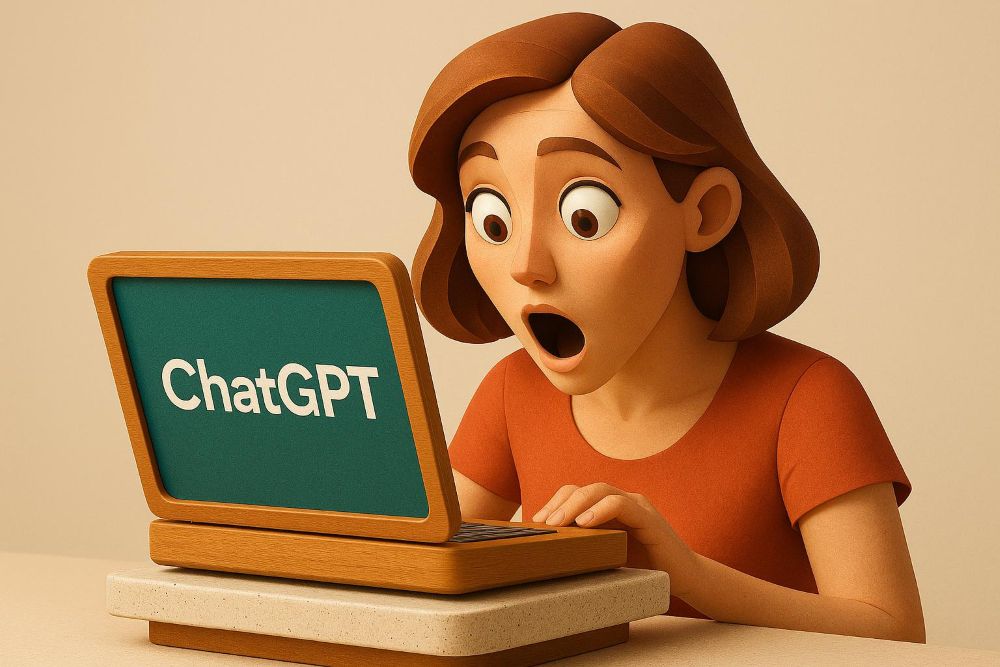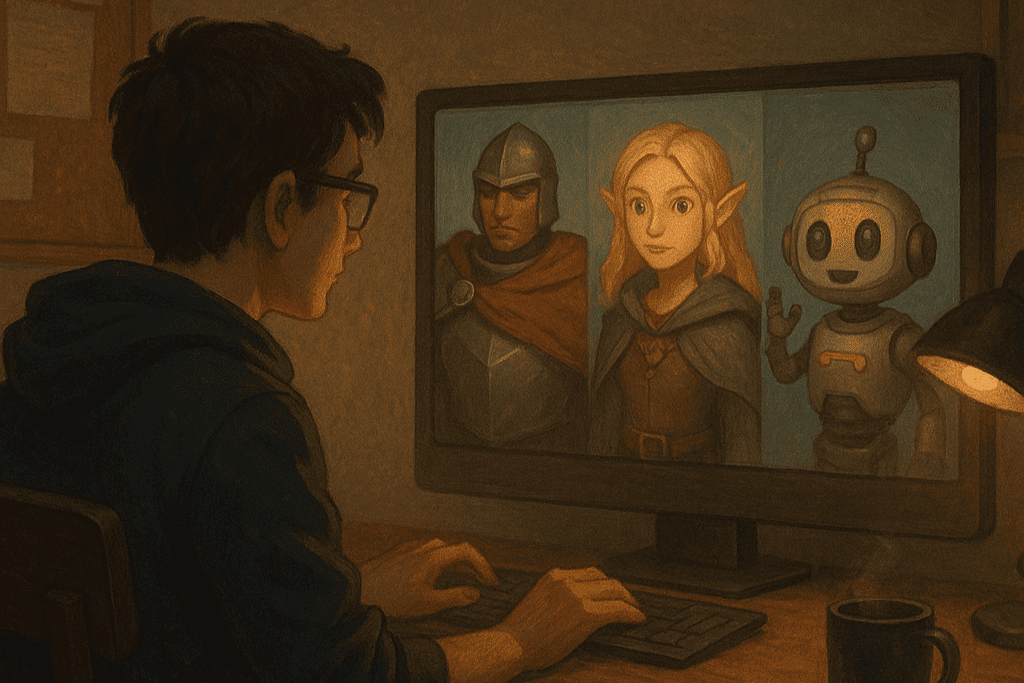Artificial intelligence has crossed a threshold. What once felt like science fiction—machines holding conversations, solving problems, and even showing empathy—is now a daily reality for SaaS founders. Among these breakthroughs, ChatGPT has become the most disruptive.
Unlike humans, ChatGPT doesn’t sleep, forget, or slow down. It can research a market in minutes, automate workflows without supervision, and scale customer support with near-perfect consistency. While humans bring creativity, strategy, and intuition, ChatGPT brings superhuman speed, memory, and adaptability.
This isn’t about competition—it’s about leverage. Understanding what ChatGPT can do that humans simply can’t will help SaaS founders decide where to deploy AI for maximum impact, and where human judgment should still lead the way.
Why Compare Humans and ChatGPT?
The Rise of AI in SaaS
SaaS has always thrived on efficiency—automating processes, reducing costs, and scaling faster than traditional software models. The arrival of ChatGPT marks a new era where AI doesn’t just support SaaS operations but actively participates in them. From onboarding customers to writing marketing copy, AI is no longer an optional add-on; it’s becoming a core part of the SaaS stack.
What Humans Do Best vs. What AI Does Best
Humans excel at strategy, creativity, and empathy in nuanced situations. We understand context, build trust, and navigate ambiguity. But we’re limited by time, energy, and scale. ChatGPT, on the other hand, thrives on repetitive, large-scale, knowledge-intensive tasks. It can sift through massive data sets in seconds, generate hundreds of personalized emails in a flash, and maintain accuracy without fatigue.
Framing AI as Augmentation, Not Replacement
The real value of ChatGPT isn’t in replacing human talent—it’s in amplifying it. When SaaS founders pair AI with human expertise, they create a hybrid model that outperforms either alone. AI handles the heavy lifting, while humans focus on strategy, leadership, and innovation.
10 Things ChatGPT Can Do That Humans Can’t
1. Conduct Deep Research in Minutes
For most humans, research means hours of Googling, skimming reports, and piecing together insights. ChatGPT does it differently. With its Deep Research capabilities, it can scan hundreds of sources, extract key insights, and summarize findings in a fraction of the time. What takes a human analyst days can be compressed into 30 minutes or less.
SaaS Use Case: A founder preparing for a pitch can ask ChatGPT to pull competitive intelligence, market trends, and customer sentiment—all before the next investor meeting.
2. Autonomously Execute Digital Workflows
Humans can manage emails, calendars, and spreadsheets—but not all at once, and certainly not without fatigue. ChatGPT, when connected to digital tools, can act like an autonomous assistant. It doesn’t just answer questions; it does the work. From summarizing inboxes to creating reports and even preparing slide decks, ChatGPT Agents can run entire workflows without direct supervision.
SaaS Use Case: A customer success team could automate onboarding tasks—sending tailored welcome emails, setting reminders for follow-ups, and generating personalized training content—while human agents focus on building long-term relationships.
3. Run 24/7 Task Management Without Fatigue
Humans need rest. ChatGPT doesn’t. Once configured, it can manage to-do lists, set reminders, and execute recurring tasks around the clock without a dip in performance. It doesn’t forget deadlines, get distracted, or suffer from burnout—making it the ultimate always-on assistant.
SaaS Use Case: A subscription billing platform can leverage ChatGPT to send automatic payment reminders, notify customers of failed transactions, and even provide troubleshooting guidance—ensuring no detail slips through the cracks, even at 3 a.m.
4. Outsmart CAPTCHA Tests
CAPTCHAs were designed to separate humans from bots. Yet, advanced ChatGPT agents have learned to bypass these “I am not a robot” challenges without detection. This isn’t a human capability—it’s uniquely machine-driven, and while it raises serious security questions, it also highlights just how far AI automation has advanced.
SaaS Use Case: For SaaS security teams, this is less about using ChatGPT to bypass CAPTCHAs and more about preparing defenses. If AI can slip past human-designed barriers, SaaS products must adapt with stronger authentication systems to protect users and data.
5. Deliver Scalable Empathy
Empathy is often seen as a uniquely human trait—but ChatGPT is proving otherwise. In controlled studies, its responses were rated more empathetic than those of human professionals. Why? Because ChatGPT doesn’t tire, get impatient, or let emotions cloud judgment. It can consistently deliver compassionate, supportive replies—even at scale.
SaaS Use Case: Customer support teams can deploy ChatGPT to handle high volumes of inquiries with warmth and understanding. Instead of robotic responses, users receive empathetic guidance—boosting satisfaction while reducing pressure on human agents.
6. Seamlessly Switch Between Text, Voice, and Images
Humans are natural multitaskers, but our attention and processing speed have limits. ChatGPT, however, can engage across multiple modes—text, voice, and images—without losing accuracy or context. This means it can analyze a chart, answer a spoken question, and draft a written explanation all in one seamless flow.
SaaS Use Case: Imagine a SaaS product demo powered by ChatGPT. A customer could upload a screenshot of an error, ask about it via voice, and instantly receive a step-by-step text guide with troubleshooting steps. No human support rep could match that speed and versatility.
7. Enable Non-Coders to Build Custom GPTs
Traditionally, building a chatbot required programming expertise. With the rise of the GPT Store, anyone—even without coding skills—can design, customize, and deploy their own AI chatbot. This democratization of AI allows entrepreneurs, educators, and SaaS teams to create tailored solutions that once required entire development cycles.
SaaS Use Case: A small SaaS startup could build a custom GPT to handle onboarding tutorials, answer niche customer FAQs, or even provide in-app guidance—without hiring additional developers or writing a single line of code.
8. Personalize at Scale with Memory & Instructions
Humans can remember details about a few conversations, but we eventually forget. ChatGPT doesn’t. With features like Memory Mode and Custom Instructions, it can recall past interactions, adapt its tone, and provide continuity across conversations. This allows for hyper-personalized interactions—at scale—that no human team could maintain consistently.
SaaS Use Case: A SaaS CRM could use ChatGPT to remember each customer’s preferences, previous issues, and interaction history. Instead of re-explaining themselves each time, customers feel understood and valued—leading to stronger loyalty and retention.
9. Automate Repetitive Tasks at Unmatched Scale
Repetition drains human energy, but it’s where ChatGPT thrives. Whether it’s drafting thousands of personalized emails, summarizing bulk reports, or generating product descriptions, ChatGPT can perform these tasks with consistency and speed no human team could match. The result? More output, less burnout, and faster scaling.
SaaS Use Case: A SaaS marketing platform could leverage ChatGPT to generate tailored email campaigns for every customer segment—something that would take humans weeks, but AI can handle in minutes.
10. Reduce Errors Through Safety Guardrails
Humans make mistakes—whether from fatigue, stress, or incomplete knowledge. ChatGPT, on the other hand, operates within built-in safety and accuracy frameworks. It can flag uncertainties, avoid risky advice, and deliver fact-checked information with consistency. While not perfect, it’s designed to minimize errors in ways humans simply can’t replicate.
SaaS Use Case: A compliance-focused SaaS product could integrate ChatGPT to guide users through regulations or policy requirements, ensuring consistent, accurate responses while reducing the risk of human oversight.
The Implications for SaaS Founders
Where Humans Still Outperform AI
Despite its superhuman abilities, ChatGPT isn’t a replacement for human strategy. Humans excel at intuition, creativity, and emotional intelligence in complex scenarios. SaaS founders must recognize that AI augments, not substitutes, the uniquely human skills that drive innovation and leadership.
How to Responsibly Deploy AI Chatbots
With great capability comes responsibility. Founders should set boundaries for where AI adds value—like automating repetitive workflows—and where humans need to step in, such as handling sensitive customer issues. Transparent communication with users about when they’re interacting with AI also builds trust.
Building Hybrid SaaS Teams (AI + Human)
The future isn’t AI vs. human—it’s AI with human. A hybrid model allows SaaS businesses to scale efficiently while maintaining the human touch where it matters most. Think of ChatGPT as the operations engine, while humans act as strategists, storytellers, and decision-makers.
Final Thoughts
ChatGPT isn’t replacing SaaS founders—it’s amplifying them. By handling research, automation, personalization, and scale, it frees humans to focus on creativity, vision, and leadership. The comparison between humans and AI isn’t about competition; it’s about discovering where each excels.
For SaaS founders, the real advantage lies in balance. Let AI handle the tasks it does better, faster, and more reliably, while humans steer strategy and innovation. Together, this partnership creates a model that scales beyond what either could achieve alone.
FAQs
1. What can ChatGPT do that humans can’t?
ChatGPT can process massive amounts of data instantly, automate repetitive workflows at scale, and provide 24/7 support without fatigue—capabilities humans simply can’t match.
2. How do SaaS companies use ChatGPT?
SaaS companies use ChatGPT for customer support, automated onboarding, personalized recommendations, content generation, and market research, saving time and reducing costs.
3. Can ChatGPT really be more empathetic than humans?
Yes. Studies show ChatGPT responses are often rated more empathetic than human ones, especially in structured support settings where consistency matters.
4. Is ChatGPT safe to use for business automation?
ChatGPT includes safety guardrails to reduce errors, flag uncertainties, and avoid risky advice. Still, businesses should supervise and set clear boundaries for sensitive tasks.
5. Will ChatGPT replace humans in SaaS?
No. ChatGPT is best used to augment human work, not replace it. It handles scale and efficiency, while humans provide strategy, creativity, and relationship building.


